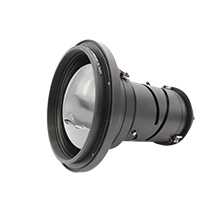7 Key Benefits of Thermal Imaging Cameras

In an era of rapid technological advancements, thermal imaging cameras have emerged as invaluable tools across a wide range of applications. These remarkable devices detect and capture the infrared radiation emitted by objects and convert it into a visual representation. Beyond their mesmerizing visuals, these cameras offer a multitude of benefits, making them indispensable in numerous fields. If you're interested in learning about the benefits of thermal imaging cameras, let's explore them together in this blog.
1. Enhanced Safety and Security
Thermal cameras are like the superheroes of safety and security. They have the unique ability to detect hidden threats that remain invisible to the naked eye. People employ thermal imaging cameras for surveillance, allowing them to spot potential threats in total darkness or through dense smoke.
In search and rescue operations, thermal cameras can locate missing persons quickly, even in challenging environments such as forests or disaster-stricken areas. Additionally, firefighters and hazardous material handlers use these cameras to identify hotspots during firefighting operations and to ensure the safe handling of potentially dangerous substances.

2. Preventative Maintenance
Preventing a problem is often more cost-effective than fixing it after it occurs. Thermal imaging cameras excel in this regard by enabling early detection of equipment failures. By identifying overheating components or electrical anomalies, maintenance teams can intervene before costly breakdowns occur. This proactive approach not only reduces downtime but also extends the lifespan of equipment, saving organizations time and money.
3. Energy Efficiency
Thermal imaging cameras play a pivotal role in enhancing energy efficiency. By identifying energy losses in buildings, they help property owners and managers pinpoint areas that require insulation improvements or HVAC system optimization. As a result, energy consumption is reduced, leading to significant cost savings and a positive environmental impact.

4. Electrical Inspections
Electrical fires are a significant concern in various industries, but thermal imaging cameras provide a reliable solution. These cameras can detect overheating electrical components, which often precede electrical failures and fires. Compliance with electrical safety standards becomes easier with regular thermal inspections, ensuring a safer working environment.

5. Building and Infrastructure Inspections
Maintaining the integrity of structures and infrastructure is crucial. Thermal imaging cameras can detect structural issues, such as moisture intrusion or heat loss, which can compromise a building's durability. By addressing these issues promptly, property owners can prevent costly repairs down the road, ensuring the long-term stability of their assets.

6. Wildlife and Environmental Monitoring
Beyond industrial applications, thermal imaging cameras are instrumental in wildlife and environmental monitoring. Researchers use these cameras to study animal behavior, track migration patterns, and assess ecosystem health. In conservation efforts, thermal imaging helps protect endangered species and preserve biodiversity.

7. Medical and Healthcare Applications
In the healthcare sector, thermal imaging cameras have found innovative uses. They can detect elevated body temperatures, aiding in the early identification of fever or infections. This non-invasive approach enhances patient care while reducing the risk of infection transmission.

As technology continues to advance, we can expect thermal imaging cameras to play an even larger role in our daily lives. Whether it's saving lives in search and rescue missions, reducing energy consumption in buildings, or protecting endangered wildlife, these cameras are changing the way we see the world. The benefits of thermal cameras are vast and impactful. Their ability to see beyond the visible spectrum opens up new possibilities across multiple industries, making our world safer, more efficient, and better understood.

















